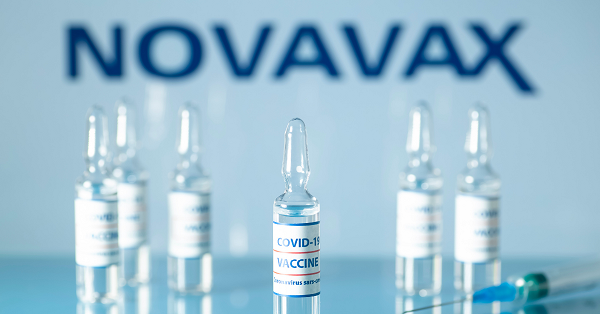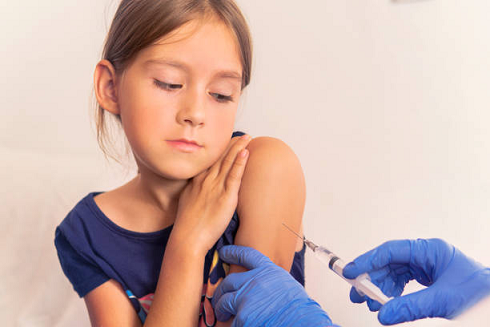Story Highlights
- Another attempt to create an effective vaccine against the Human Immunodeficiency Virus (HIV) has been stopped early because it was not found to prevent HIV infection.
- It is estimated that 1,000 people are newly infected every day in South Africa.
- HIV virus appears to evade and destroy cells of the immune system and has a high mutation rate, which has been a continuing problem for drug companies and government researchers developing HIV vaccinesj.
Another trial of an experimental vaccine against the Human Immunodeficiency Virus (HIV), which is thought to be the cause of Acquired Immunodeficiency Syndrome (AIDS), has been halted earlier than expected in South Africa due to lack of effectiveness. The experimental HIV vaccine was a variation of one used in an earlier clinical trial conducted in Thailand, in which the study vaccine was reported to be about 30 percent effective over 3.5 years.
The new clinical trial was carried out in South Africa, where health officials say an estimated 1,000 people are infected with HIV every day.1 With 240,000 new infections in 2018, it is estimated 20 per cent of the population between the ages of 15 and 49 are living with HIV.2
The experimental HIV vaccine being tested in the South Africa clinical trial had been adapted to the HIV subtype Clade C, which is the HIV subtype that is most common in South Africa.
Study Design and Results
Conducted by the National Institute for Allergy and Infectious Diseases (NIAID), the HIV vaccine trial was launched in October of 2016 and recruited 5,407 HIV-negative volunteers, all sexually active men or women between the ages of 18 and 35, in 14 locations across South Africa.3
Approximately half of the study participants were randomly assigned to receive the experimental HIV vaccine and the other half received a placebo. The vaccine was given in a series of six injections over 18 months, with booster shots given at the one-year and 18-month marks. In addition to the HIV vaccinations, all participants also received information and access to oral HIV prevention medications (pre-exposure prophylaxis or PrEP), as well as counseling on preventive behaviors and practices and referral for antiretrovirals to be taken following suspected exposure to HIV.4
The HVTN 702, or Uhambo (“journey” in Zulu) study, used two experimental vaccines against HIV, both created from synthetic copies of HIV pieces. The two vaccines contained no parts derived from the actual HIV virus, instead relying on proteins from other viruses in hopes the proteins would act as a trigger and the immune system would produce antibodies to HIV.
One of the vaccines, ALVAC vCP2438, used canarypox, a bird virus that can infect but not multiply in human cells, to deliver a protein found on the outer envelope of HIV. The other vaccine, Bivalent Subtype C gp120/MF59, used a two-component protein subunit vaccine with an added adjuvant and similarly mimicked proteins found on HIV. The hope was that, since these proteins are not only similar to HIV proteins but also are able to provoke an immune reaction, the immune system would be able to use those antibodies to recognize and kill HIV when it was encountered.5 6
Once 60 percent of the subjects had been actively enrolled in the study for a minimum of 18 months, preliminary results were analyzed. That interim analysis revealed similar results in the two groups, with 129 new HIV infections among active vaccine recipients, and 123 among placebo recipients.7
The investigators decided to halt the study.
Unique Difficulties in Developing an HIV Vaccine
“One of the reasons why it has been so difficult to make an AIDS vaccine is that the virus infects the very cells of the immune system that any vaccine is supposed to induce,” according to Guido Silvestri, MD, chief of microbiology and immunology at Yerkes National Primate Research Center in Atlanta, Georgia. In most cases of viral infection, the immune system creates antibodies to fight it; that does not happen with HIV, the virus that causes AIDS.8
HIV not only evades the body’s immune system and destroys the immune cells themselves, but it also is highly mutagenic, which has resulted in a diverse genetic population of subtypes. It has been difficult for manufacturers and researchers to find a logical starting point.9
Efforts in the Pipeline
Two other HIV vaccine trials are underway. The first (705 or Imbokodo) is recruiting women in five countries in South Africa and the second (706 or Mosaico) is enrolling gay men and transgender persons in Europe and North America. Both are using a cold virus as the vector, with differing surface proteins.10
Other efforts by researchers include “ proof-of-concept” studies evaluating the use of intravenous antibodies to prevent HIV, the use of neutralizing antibodies against HIV and injection of a long-acting antiretroviral drug. Other new products under study, include implants and vaginal rings that might provide contraception and prevent HIV transmission.11
References:
1 Sifferlin A. Why You Still Can’t Get a Vaccine for HIV. TIME Nov. 28, 2016.
2 Theisen L. An HIV Vaccine Trial Has Ended In Disappointing Failure. The Daily News Feb. 3, 2020.
3 Laguipo ABB. Promising HIV Vaccine Fails In A Large-Scale Clinical Trial. News-Medical Feb. 4, 2020.
4 National Institute of Allergy and Infectious Diseases. Experimental HIV Vaccine Regimen Ineffective in Preventing HIV. National Institutes of Health Feb. 3, 2020.
5 See Footnote 3.
6 McNeil DG. Another H.I.V. Vaccine Fails a Trial, Disappointing Researchers. The New York Times Feb. 4, 2020.
7 See Footnote 2.
8 See Footnote. 1.
9 PBS. Finding a Cure: Is an AIDS Vaccine Out of Reach? Frontline May 30, 2006.
10 See Footnote 6.
11 See Footnote 4.













3 Responses
“Another trial of an experimental vaccine against the Human Immunodeficiency Virus (HIV), which is thought to be the cause of Acquired Immunodeficiency Syndrome (AIDS), has been halted earlier than expected in South Africa due to lack of effectiveness.”
Isn’t a big issue with any vaccine and especially the one for HIV is the fact that an actual virus has never been found with the electronic microscope? I remember Noble Prize scientist disputing and signing a document stating that there was no scientific proof of the virus.
-The view of The Perth Group is that the HIV/AIDS experts have not proven:
http://www.theperthgroup.com/whatargued.html
You know once the SCIENCE OF CONSENSUS bands together, any other theories and discussions of alternatives that don’t agree with them is considered fake or fraudulent therefore dismissing people as kooks who try and just ask questions. A virus is extremely difficult to see, even with a electronic microscope. At the link below is an interview with a Electronic Microscope Pioneer Dr. Étienne de Harven:
Can Electron Microscopy Resolve The HIV Battle? An Exclusive Interview with EM Pioneer Dr. Étienne de Harven-https://www.thetruthbarrier.com/2013/06/20/can-electron-microscopy-resolve-the-hiv-battle-an-exclusive-interview-with-em-pioneer-dr-etienne-de-harven/
The paper is technical (not overly) but the conclusion Dr. de Haven states are:
-we all carry, in our chromosomes, defective endogenous retroviruses (HERVs) that have interfered, most presumably, as misleading, confounding factors in AIDS research;
-“HIV” is not an endogenous retrovirus;
-“HIV”, as an exogenous, AIDS causing retrovirus simply does not exist, and this fact should be recognized as soon as possible for a complete, radical re-distribution of AIDS research funds, worldwide.
This article simplifies the paper:
How are viruses discovered and identified in the first place?
https://blog.nomorefakenews.com/2020/02/18/how-are-viruses-discovered-and-identified-in-the-first-place/
If you remember the paper Investigative Journalist Janine Roberts discovered during her research into the CDC’s file on the Measles vaccine and what the science of consensus considered to be a Measles virus from which the vaccine is made, you gotta question with the HIV vaccine they are trying to develop and have been working on for decades, exactly what do they consider the virus to look like or be?
Is this the vaccine that Johnson & Johnson is trying to market?
HIV is caused from about 16 strains of virus, and the body routinely clears them from the body. Why did this article not bother to mention that?